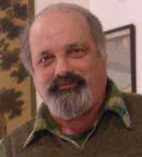Friday, July 21, 2006
Imminent Sequencing of the Neanderthal Genome
In approximately two years time what will be perhaps the seminal event of the 21st century will take place. The complete Neanderthal nuclear genome will be sequenced in a collaborative effort by the Max Planck Institute for Evolutionary Anthropoloy in Leipzig, Germany, and 454 Life Sciences Corporation, in Branford, Connecticut. Prof Svante Pääbo, Director of the Institute's Department of Evolutionary Anthropology, and Dr. Michael Egholm, Vice-President of Molecular Biology for 454 Life Sciences will jointly direct the project, made possible by financing from the Max Planck Society. 454 Life Sciences' newly developed sequencing technology has made it possible to extract and sequence nuclear DNA from fossil bone, a hopeless task using traditional techniques.
The significance of sequencing the nuclear genome of Neanderthals cannot be overestimated. Not only will it definitively demonstrate the nature of their relationship to modern humans, it will also define what it is that makes us distinct from our immediate pre-modern ancestors. Combined with the sequencing of the Chimpanzee genome we will be in the position to understand, to an unprecedented degree, the genetic transformation from ape to human. The implications for medical research are also stupendous, as we will be able to hone in on significant genetic sequences unique to modern people and compare them to both pre-modern human and pre-human sequences. As the techniques employed become more sophisticated the prospects for unraveling other aspects of our evolutionary past will increase exponentially. We will eventually be able to infer the nuclear genome of the chimpanzee/human last common ancestor and the genomes of ancestors throughout the course of human evolution. What an exciting prospect! Read more details about the project and view a webcast press conference about it from this Max Planck Institute press release and learn more about the techniques involved from this press kit by 454 Life Sciences.
